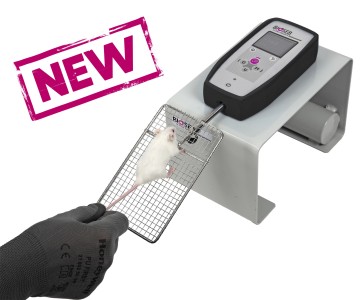Authors
M Nachit, M De Rudder, JP Thissen et al
Lab
Laboratory of Hepato_Gastroenterology, IREC, UCLouvain, Avenue E Mounier 53, Box B1.52.01, 1200 Brussels, Belgium
Journal
Journal of CachexiaÊ
Abstract
Background Non_alcoholic fatty liver (NAFL) disease (NAFLD) is the most common chronic liver disease in the world. While most subjects have ÔinertÕ NAFL, a subset will progress to non_alcoholic steatohepatitis (NASH) and its life_threatening complications. A substantial body of literature supports that a low muscle mass, low strength, and/or muscle fatty infiltration (myosteatosis) are associated with NAFLD severity. Here, we evaluated the muscle compartment in NASH preclinical models to decipher the kinetics of muscle alterations in relation with liver disease progression.
Methods We developed and validated a micro_computed tomography_based methodology to prospectively study skeletal muscle mass and density in muscle and liver (i.e. reflecting fatty infiltration) in a high_throughput and non_invasive manner in three preclinical NAFLD/NASH rodent models: fat aussie (FOZ) mice fed a high_fat diet (FOZ HF), wild_type (WT) mice fed a high_fat high_fructose diet (WT HFF), and WT mice fed a high_fat diet (WT HF). We compared them with WT mice fed a normal diet (WT ND) used as controls.
Results _FOZ HF with fibrosing NASH had sarcopenia characterized by a reduced muscle strength when compared with WT HF and WT HFF with early NASH and WT ND controls (165.2 ± 5.2 g vs. 237.4 ± 11.7 g, 256 ± 5.7 g, and 242.9 ± 9.3 g, respectively, P 60; 0.001). Muscle mass or strength was not lower in FOZ HF, WT HF, and WT HFF with early NASH than in controls. Myosteatosis was present in FOZ HF with fibrosing NASH, but also in FOZ HF, WT HF, and WT HFF with early NASH (muscle density = 0.50 ± 0.02, 0.62 ± 0.02, 0.70 ± 0.05, and 0.75 ± 0.03, respectively, with P 60; 0.001 when compared with respective controls). Myosteatosis degree was strongly correlated with NAFLD activity score (r = _0.87, n = 67, P 60; 0.001). In multivariate analysis, the association between myosteatosis and NASH was independent from homeostatic model assessment of insulin resistance and visceral fat area (P 60; 0.05). Myosteatosis degree powerfully discriminated NASH from benign NAFL and normal liver (area under the receiver operating characteristic = 0.96, n = 67, P 60; 0.001).
Conclusions Taken together, our data support that there is no sarcopenia in obese mice with early NASH. In contrast, the severity of myosteatosis reflects on hepatocellular damage and inflammation during early NASH development. This observation prompts us to exploit myosteatosis as a novel non_invasive marker of NASH.
BIOSEB Instruments Used
Grip strength test (BIO-GS3)
Source :

 Douleur - Allodynie/Hyperalgésie Thermique
Douleur - Allodynie/Hyperalgésie Thermique Douleur - Spontanée - Déficit de Posture
Douleur - Spontanée - Déficit de Posture Douleur - Allodynie/Hyperalgésie Mécanique
Douleur - Allodynie/Hyperalgésie Mécanique Apprentissage/Mémoire - Attention - Addiction
Apprentissage/Mémoire - Attention - Addiction Physiologie & Recherche Respiratoire
Physiologie & Recherche Respiratoire




































 Douleur
Douleur Système Nerveux Central (SNC)
Système Nerveux Central (SNC)  Neurodégénérescence
Neurodégénérescence Système sensoriel
Système sensoriel Système moteur
Système moteur Troubles de l'humeur
Troubles de l'humeur Autres pathologies
Autres pathologies Système musculaire
Système musculaire Articulations
Articulations Métabolisme
Métabolisme Thématiques transversales
Thématiques transversales Congrès & Meetings
Congrès & Meetings 